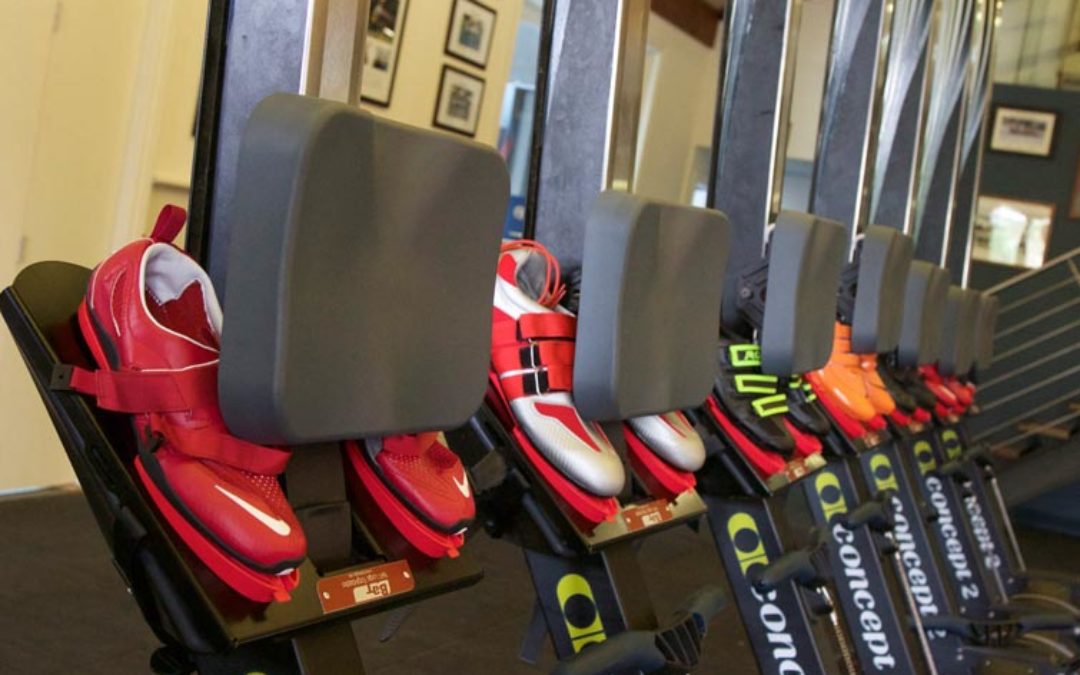Easy seconds off your ergo time
When we run, we wear running shoes. When we cycle, we wear cycling shoes. When we are at the beach, we wear thongs, well when we are in Australia, don’t panic that’s our name for flip flops.
So why when we erg do we wear running shoes? Convenience is one answer, however the ground reaction forces and arch ratios encountered while running and walking are not replicated in the rowing stroke so
cushioning is not required for joint protection or arch support. Throughout our testing we have witnessed reasons you should have a think about your footwear and seek a suitable alternative next time you strap in for that ergo test.
For a start, running shoes are designed for shock absorption. Most have at least three different layers of material to reduce the impact of running or walking and provide that soft cushioning comfort we all look for in a running shoe.
When we are rowing however, we are looking for a direct transfer of the force we produce with our legs to the stretcher. Nice soft cushioned sale on our shoes, (while possibly comfortable for the feet) will act as a sponge and impede the direct transfer of force from our legs to the footplate.
This is best demonstrated by examining the effect of using shoes with a cushioned sale in the context of the mechanics of rowing.The rowing leg drive (from catch to legs down) lasts around 0.5 – 0.7 of a second depending on rate. The specific load time from catch to peak force is always around 0.4sec from rate 22-36 SPM. It is during this period that the majority of power used to propel the boat is created.
It is therefore vital that no power is lost during this period, in particular given the short period of time in which to load and transfer our power into the stretcher. Any cushioning or lateral ‘slop’ in our shoes will delay or impede this process.
At one extreme, the cushioning provided in many running shoes is not completely compressed during the leg drive as the force is applied differently to when running and to make matters worse, the shoes are in fact designed to absorb force in order to reduce load. This is the opposite of what you want on your 2k or in general training. With running shoes you will never be able to fully transmit the power produced by your legs.
Although this is not the case with all shoes, the presence of cushioning, or the use of a shoe that fits poorly
(including allowing lateral ‘slop’ movement or softness over the toes and heel) means energy efficiency is
compromised and power will absorbed by the shoe rather than being applied to pull the ergometer handle.
Examine your shoes next time get on the ergometer and start to ask yourself, if I could connect better, could I improve my score? What if I could use my racing equipment on the ergo? Well now you can and the solution is on our website at https://batlogic.net/ergadaptor-2/ -this equipment has already yielded 5 in-door world records and a big part of how it works is in allowing you to transfer force more effectively. Check it out and drop your splits.

